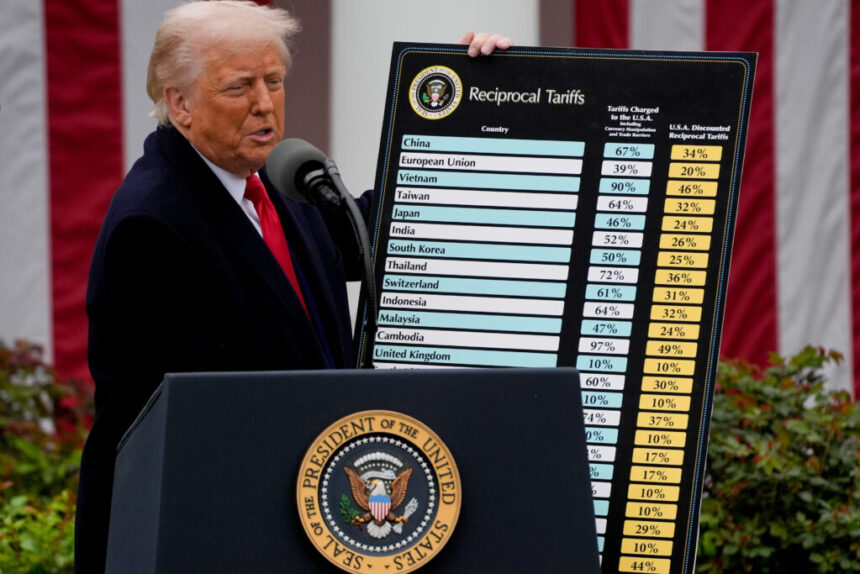Despite President Donald Trump’s global tariff chaos, the United States has collected more in tariff revenue in the first six months of 2025 than it did in the entire year of 2024, according to official Treasury Department data and independent economic reports in the U.S.
Between January and June 2025, the U.S. government raked in over $87 billion from customs duties, outpacing the total $79 billion collected last year as Trump’s tariffs surpassed 2024 revenue from tariffs.
The dramatic increase follows the implementation and expansion of crushing global tariffs under President Trump, who returned to office in January and moved quickly to impose sweeping trade restrictions on goods from China, Mexico, Canada and the European Union.
Pan-Atlantic Kompass had in early April reported that a baseline universal tariff of 10 per cent was also slammed against nearly all goods coming from countries.
While the 10 per cent tariff is a flat tax on every import entering the US, the reciprocal tariffs specifically target imports from 60 nations including Nigeria, South Africa, Cote d’ Ivoire and Botswana among others affected in Africa.
In June alone, U.S. tariff revenue reached $26.6 billion, making it the strongest monthly performance since the introduction of the 2025 tariff package. That figure is nearly four times the amount collected in January 2025 and marks a significant acceleration in collections mid-year.
The data was first reported by international outlets including AFP and NDTV, citing U.S. Treasury sources and customs revenue trackers. Economic analysis published in The Economic Times confirms that the U.S. government has already surpassed its 2024 tariff intake by mid-year, driven primarily by a combination of higher tariff rates and a broader list of dutiable goods.
While Trump and his allies tout the figures as evidence that tariffs are a “winning strategy” for American economic independence and deficit reduction, analysts caution that the revenue boost may come at a steep cost to consumers and businesses.
“Tariff revenue is rising sharply, but so are import costs and downstream prices,” said Dr. Michael Strain, director of economic policy studies at the American Enterprise Institute. “Businesses will pass those costs on, and that acts like a hidden tax on U.S. households.”
The Tax Foundation estimates that the current tariff regime could reduce U.S. GDP by 0.8% over the next decade and cost the average household over $1,200 annually. Critics have also pointed to retaliatory tariffs from trading partners and increased inflationary pressures on imported goods.
Still, the Treasury windfall from customs duties is politically significant. Proponents of the policy argue that tariff revenues—estimated to exceed $170 billion by year-end if current trends hold—offer an alternative to borrowing or raising taxes amid record federal deficits.
“American workers are finally getting the upper hand,” Trump said during a July 15 rally in Ohio. “Other countries are paying us instead of robbing us blind.”
As of July, total customs revenue for fiscal year 2025 stands at approximately $108 billion, according to U.S. Treasury’s Monthly Treasury Statement and corroborated by USAFacts.org.
As Trump’s tariffs surpassed 2024 revenue, the administration was yet to release official projections for second-half revenue, but economists expect the numbers to remain high if tariff policies remain in place.
Pan-Atlantic Kompass understands that the surge in U.S. tariff revenue comes as Trump’s reciprocal tariffs are expected to go into effect tomorrow, August 1.
This implies that the world is set to face higher U.S. tariffs once again as the initial suspension of the reciprocal tariffs ends on Friday.





